4 of the Weirdest Alternate Realities – Friday Four
- October 17th, 2014
- Posted in Lists
- Write comment
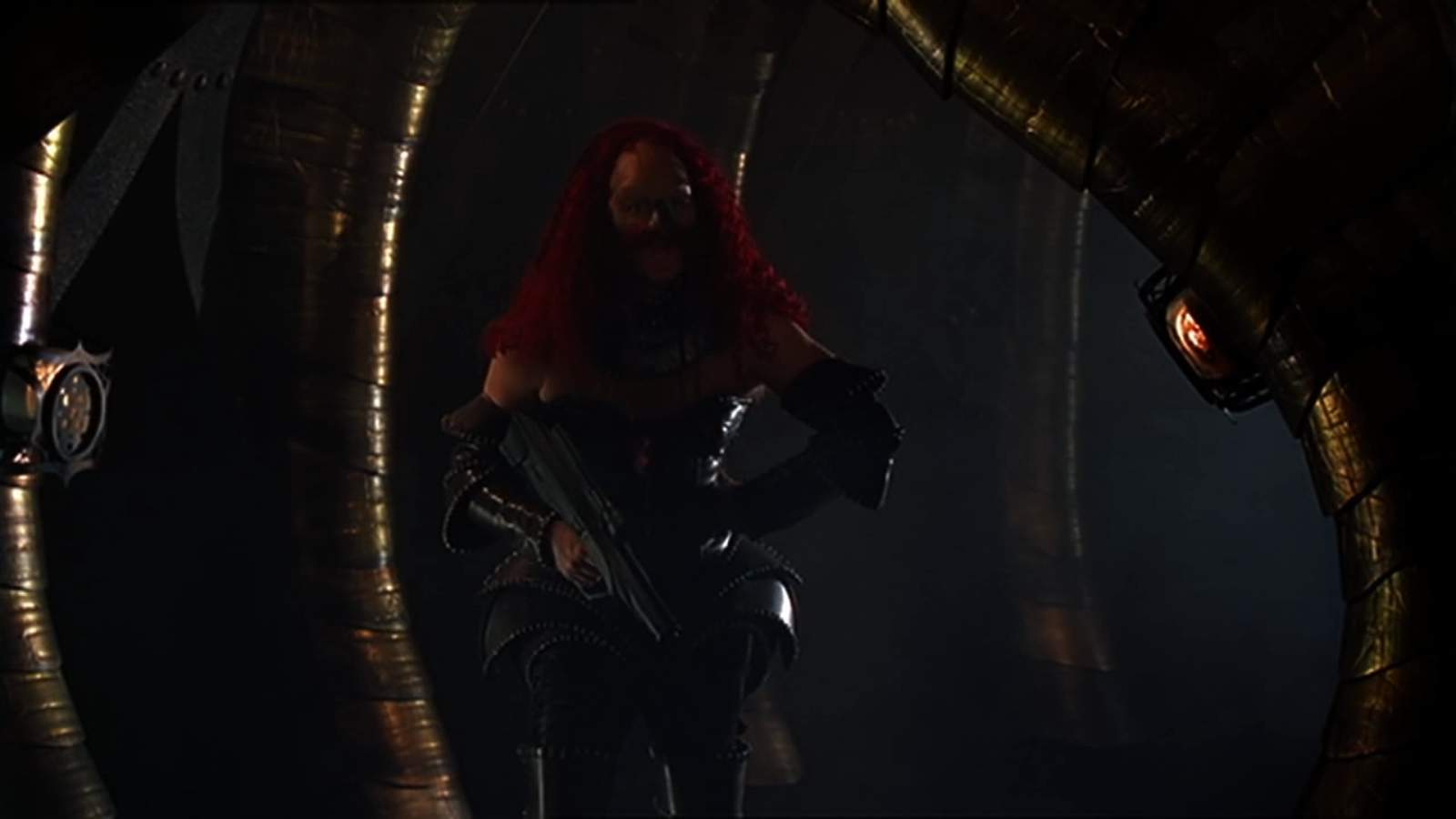 One of the most interesting opportunities presented by science fiction shows is that of the alternate universe. It gives us a glimpse at another version of our heroes, in a reality where things turned out slightly differently. Perhaps they lost the climactic battle, or maybe someone died early on and caused the group to splinter. Sometimes the differences in these alternate universes (or realities, or timelines, or any other different world from the primary) can be absolutely huge–entire characters might be missing or new ones exist in their place, or worse, the entire landscape of the setting is changed, like with Star Trek‘s Mirror Universe. But there are also these, alternate universes where one can’t even quite imagine how they got to the state they’re in.
One of the most interesting opportunities presented by science fiction shows is that of the alternate universe. It gives us a glimpse at another version of our heroes, in a reality where things turned out slightly differently. Perhaps they lost the climactic battle, or maybe someone died early on and caused the group to splinter. Sometimes the differences in these alternate universes (or realities, or timelines, or any other different world from the primary) can be absolutely huge–entire characters might be missing or new ones exist in their place, or worse, the entire landscape of the setting is changed, like with Star Trek‘s Mirror Universe. But there are also these, alternate universes where one can’t even quite imagine how they got to the state they’re in.
4. Stargate Atlantis
It’s the second to last episode of Stargate Atlantis (although it didn’t have to be). We’ve already had some alternate universe shenanigans this season, so what’s one more? And while we’re at it, let’s go really alternate. And so “Vegas” was born. The episode’s working title was “CSI:Atlantis,” and it shows. Essentially, in this universe, Sheppard received a dishonorable discharge from Afghanistan instead of getting reassigned to fly around in Antarctica, so he never joined the Atlantis expedition and instead became a Las Vegas detective. His life’s kind of a mess as a result, and it isn’t until a mysterious serial killer turns out to be an alien (a Wraith, specifically) that Sheppard is pulled into the usual Stargate stuff. He meets alternate versions of several other characters, including Woolsey, McKay, and a delirious Todd who’s slowly starving to death as they hold him on Earth for study. We pretty much never see the prime universe in this episode, and it plays out like a police procedural with extraterrestrial elements. The only way that this episode affects the prime universe is at the very end, but it’s a great episode nonetheless, as it does give some insight into who Sheppard is at heart and the constants of his character, even if things had turned out differently.
3. Deep Space 9
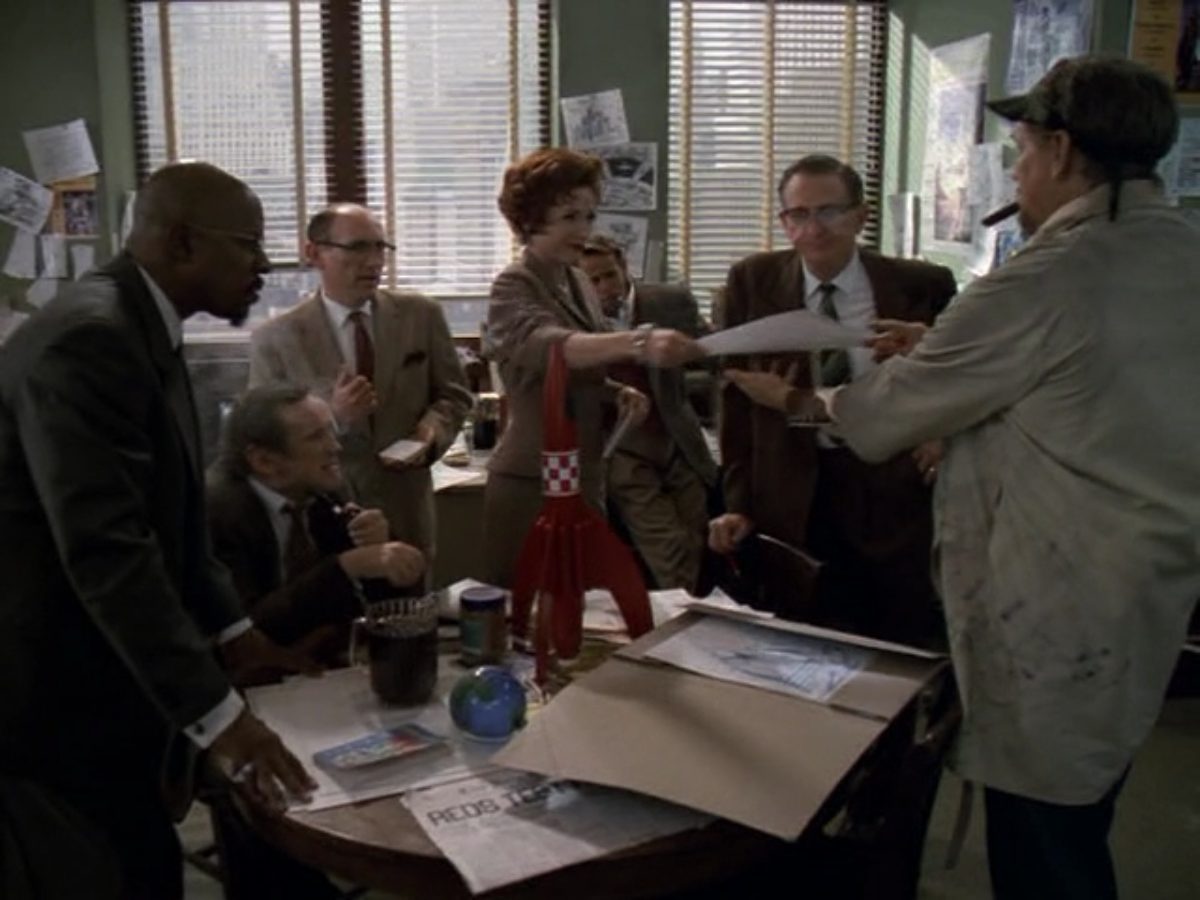
Benny and the rest of the Incredible Tales crew. This is the only time some of them are ever on screen without their alien makeup.
In Star Trek, we’ve seen many an alternate universe. The Mirror Universe, the worlds that Worf sees in “Parallels,” the alternate timeline of “Yesterday’s Enterprise.” But of all the times that we see alternate versions of our characters, none are more different than in the DS9 episode “Far Beyond the Stars.” Sisko starts seeing things, and before you know it, we’re in the office of a 1950’s pulp sci-fi magazine, filled with human counterparts of nearly everyone on the show. Sisko himself is a man named Benny Russell, who struggles against racism and tries very hard to get his story about a black spaceman aboard a far-off station called Deep Space 9 published in spite of that. The roles that the normal actors take are interesting, as they basically make it look like their usual DS9-selves are actually larger-than-life versions of how Benny sees them. Albert Macklin, O’Brien’s counterpart, is shy and stutters and feels more comfortable with the idea of robots than humans, so naturally in Benny’s story, he’s the tech wiz engineer. Douglas Pabst, Odo’s counterpart, is the hardass boss who can still be reasoned with, so the Odo in his story is a constable concerned only with the rule of law, not right or wrong. The racist cop Burt Ryan matches up with Sisko’s nemesis Dukat, who’s similarly egotistical and racist. All this actually works really well, and the designs we see for retro-futuristic 50’s pulp versions of Trek technology are very cool. This world shows up again in the seventh season episode, “Shadows and Symbols.”
It’s quite a huge change of pace, and if it hadn’t been pulled off so nicely it’d be very conspicuously out of place. Whether this is a true alternate universe is debatable, but Sisko speculates about its reality at the end, and that’s good enough for me.
2. Farscape

They basically did this by putting the actors into each other’s makeup and costumes, and the effect is really disorienting.
So we’ve basically got two kinds of AUs on this list: ones where things are fairly normal, if radically different from the status quo (like the two above) and then we have these last two, where the alternate universe runs on madness and and bares only the vaguest resemblance to the normal one. We see one such world in Farscape that’s visited on two occasions, with the latter, in the episode “Prayer,” being the more prominent. This universe features weird, combined versions of the various characters, and is described as inherently unstable, as you might expect from a place populated by impossible people. There’s still the appropriate number of crewmembers, but Sikozu is mixed with Stark, and Rygel is mixed with Noranti, and so on (hilariously, Jool is mixed with D’Argo, as seen above, and D’Argo himself is mixed with, and played by, the Rygel puppet). Most notable, however, is Chiana/Aeryn, who combines the two characters that Crichton seem to care about the most–and then he’s put in a situation where he has to hold a gun to her head. Yeah. I won’t spoil it for you, but suffice it to say that this reality and what ends up happening to it is weird even by Farscape‘s standards, which is really saying something.
1. Doctor Who
(Series 6 finale spoilers ahead)
Doctor Who mostly travels back and forward in time through our universe, but once in a while he ends up somewhere else. Typically, like with Pete’s World, it’s not that different, but different enough that being there is a problem. But when things get screwed up and we see a really bad world, it’s a seriously weird one. In “The Wedding of River Song,” River refuses to kill the Doctor at Lake Silencio like she’s supposed to. Since that’s supposedly a fixed point in time, the entire timeline basically breaks down, until all of history is occurring at once. Time is “moving,” in that people can interact and such, but not really passing; every clock is frozen at the time of the fixed point (why do they even have clocks and calendars if they never change?). This “all of history at once” approach results in weirdness like Holy Roman Emperor Winston Churchill, pterodactyls, Silurians and BBC Christmas specials put on by Charles Dickens all coexisting in 2011. This is apparently localized to Earth, so while the rest of the universe goes on (for now), the alternate versions of Amy and Rory are left to clean up the mess until they can find the Doctor again and get it all sorted out. And this is coming after series 5’s finale, which had essentially the opposite happen in that Earth was the only place left relatively unaffected while everywhere else was screwed up and disappearing. Funny how that works.



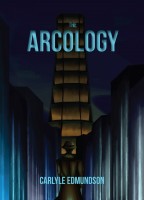
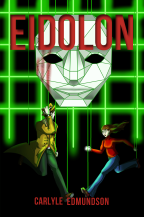
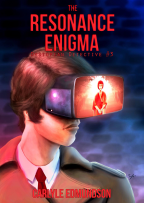
No comments yet.